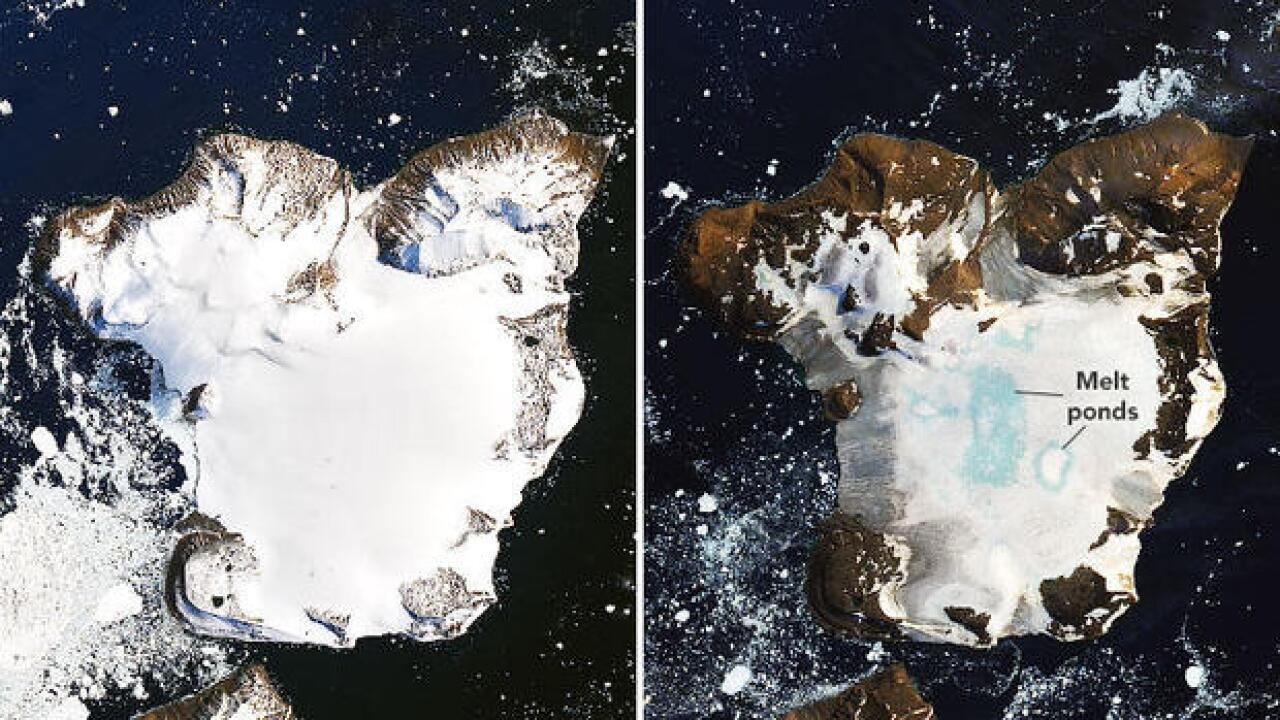Earlier this month, temperatures in Antarctica appeared to reach a record-breaking 64.9 degrees Fahrenheit, matching the temperature in Los Angeles that day. New images released by NASA show the dramatic ice melt caused by the heat wave, a phenomenon that is becoming more and more common in the peninsula.
NASA's Earth Observatory released two new images Friday by the Operational Land Imager on Landsat 8 that show the difference on the Eagle Island ice cap between February 4 and February 13.

The before-and-after snapshots show a dramatic decrease in ice and snow along the northern tip of the Antarctic peninsula. In the later shot, a large portion of the ground is visible, as are bright blue melted ponds in the center of the island.
Eagle Island is only about 25 miles from Argentina's Esperanza research base, which recorded the potentially record-high temperature on February 6. According to NASA climate models, the island experienced peak melt — about 1 inch — on that same day, leading to a loss of 4 inches total in a one-week period.
Eagle Island lost around 20 percent of seasonal snow accumulation in that single event, NASA said.
"I haven't seen melt ponds develop this quickly in Antarctica," Mauri Pelto, a glaciologist at Nichols College in Massachusetts, said in a NASA press release Friday. "You see these kinds of melt events in Alaska and Greenland, but not usually in Antarctica."
According to Pelto, this kind of rapid melting is caused by sustained temperatures significantly above freezing, an almost-unheard-of phenomenon in Antarctica until the 21st century that's become more common in recent years.
"If you think about this one event in February, it isn't that significant," said Pelto. "It's more significant that these events are coming more frequently."

The World Meteorological Organization is still working to verify the record temperature, but the agency called the Antarctic Peninsula one of the faster warming regions on Earth.
The heatwave was the culmination of several atypical weather patterns off the coast of South America. Warm temperatures built up due to a ridge of high pressure over Cape Horn, Chile. While warm air is typically kept out of the peninsula by strong winds, the westerlies were in a weakened state, allowing warm air to reach the ice sheet.
February's heat represents a worrying pattern: It was the third major melt event of this year's Antarctic summer, following warm spells in November and January.
Scientists also recently found warm water for the first time beneath a vital point of Antarctica's "doomsday glacier," a nickname for one of Antarctica's fastest melting glaciers. The collapse of the 74,000-square-mile Thwaites could release a mass of water roughly the size of Florida or Great Britain, raising sea levels by more than three feet.
On Elephant Island, just slightly north of the peninsula, chinstrap penguins have suffered a 60 percent decline because of the increasing temperatures, researchers found. WMO researchers have also discovered that the average temperature in Antarctica has increased by more than five degrees Fahrenheit over the last 50 years — a rate five times the global average.



